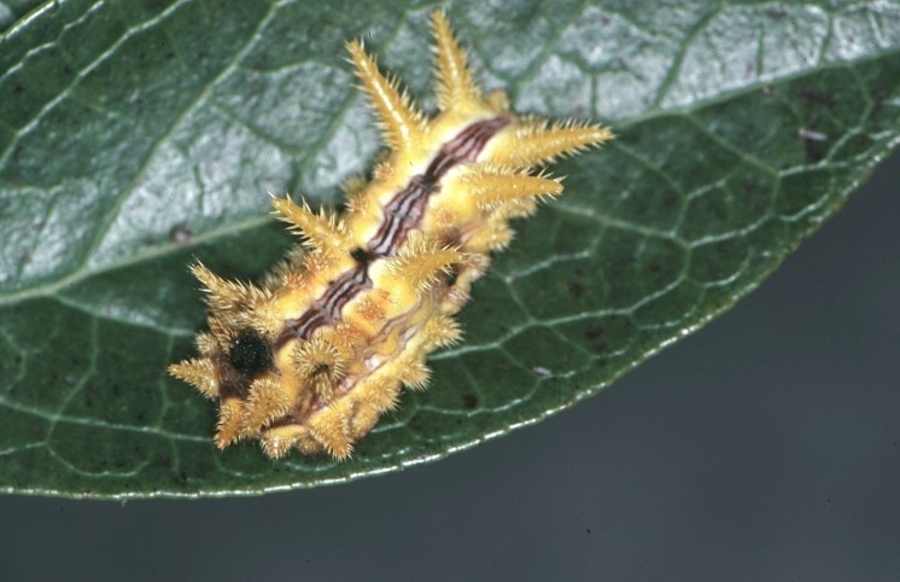SAN ANTONIO – Stinging caterpillar season is back in Texas and experts are warning that touching the insects can cause contact rashes and painful reactions.
Stinging caterpillar species include the buck moth caterpillar, spiny oak slug caterpillar, hickory tussock moth caterpillar, saddleback caterpillar and Io moth caterpillar, according to Texas A&M AgriLife Extension.
Recommended Videos
Asp caterpillars, also known as a puss or southern flannel moth caterpillar are furry and fluffy looking, with different color variations. Touching them can cause a burning sensation and a rash that could be very itchy and may even require a trip to the emergency room, AgriLife Extension experts say.
Eek!! Stay away from these dangerous critters in San Antonio and South Texas
“A good rule of thumb is if a caterpillar looks ‘fuzzy’ - don’t touch it,” said AgriLife Extension specialist Molly Keck.
People will react differently to caterpillar toxins with some developing a more severe reaction than others. Different areas of the body may also have more or less severe reactions depending on the thickness of the skin in the area where you’re stung.

Most of the time, the pain and rash will go away in hours, or sometimes days.
Other symptoms after a sting can include nausea, vomiting, headaches, respiratory stress or shock, according to a news release.
“You are more likely to encounter stinging caterpillars when they leave their host plant in search of a spot to pupate, which is currently happening with many caterpillars,” said Keck. “They aren’t aggressive and won’t come after you, but they can drop from trees.” This makes it easier for dogs or children to find the stinging caterpillars.
Keck has reported sightings of both buck moth caterpillars and tussock moth caterpillars in Bexar County, the news release states.
The caterpillars are typically prevalent in San Antonio from March through December.
AgriLife Extension specialist Mike Merchant said puss moth caterpillars can be controlled when they become abundant by spraying with a residual pesticide such as permethrin, cyfluthrin or similar sprays labeled for control of caterpillars on ornamental plants.
“The best solution to dealing with stinging caterpillars may just be educating adults and children on what these caterpillars are, what they look like, and the importance of not touching them with bare hands,” Merchant said.

